Basic Principles and Characteristics of Hologram
Holography is a "no lens", the two-step imaging method, it is recorded on photographic film at the same time all of the information of the object, i.e. the amplitude and phase of the object light. Hologram process is divided hologram recording and reproduction of two steps: The first step called wavefront record (the hologram record); second step of the reproduction of the object (reproducibility).
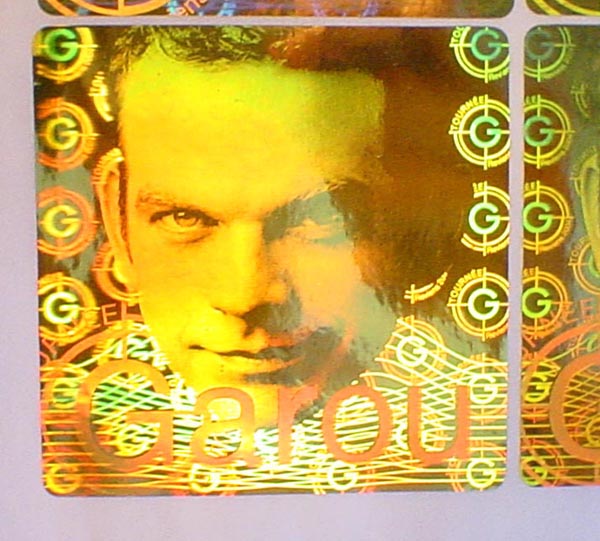
Records based on wavefront interference principle object wave and reference wave coherent superposition produce interference fringes. Contrasting the degree of interference fringes recorded in front of the object wave amplitude distribution of interference fringes geometric characteristics (including the shape, spacing and location), the phase distribution recorded in front of the object wave.
That is, the intensity distribution on the hologram recording all of the information of the object wave - the amplitude distribution and phase distribution, and they respectively reflect the characteristics of the brightness of the object and the depth position. It should be noted that any photosensitive film can only record the distribution of the amplitude (or intensity), and can not directly record the phase distribution, the hologram is able to record the phase distribution is the use of a reference wave to convert it into the interference fringe intensity distribution Without reference wave, or it irrelevant object wave wavefront phase distribution is unlikely to be recorded.
Wavefront reconstruction theory based on diffraction theory, lighting the lightwave (reproduction light) after a complex hologram diffracted light waves.
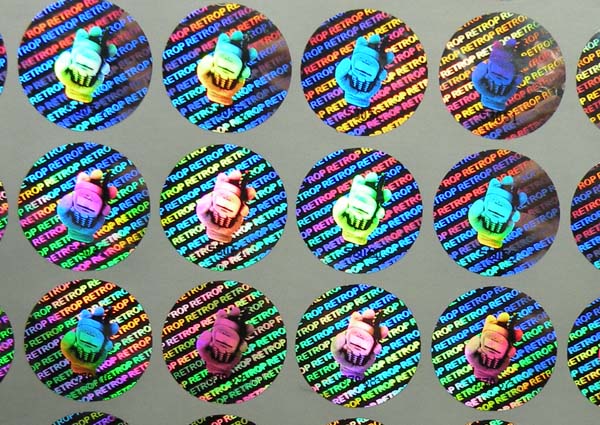
Hologram-diffracted wave contain three major components, i.e., the object wave (+1 st-order diffracted wave), and material lightwave conjugate wave (-1 order diffracted wave), according to the illumination of light waves (zero-order diffracted wave) straight forward. The modern record and reproduce the holographic device, three diffraction waves in space are separated from each other without disturbing each other, ease of observing people with the eyes or the lens to the virtual image of the object wave, or the real image of the conjugate wave.
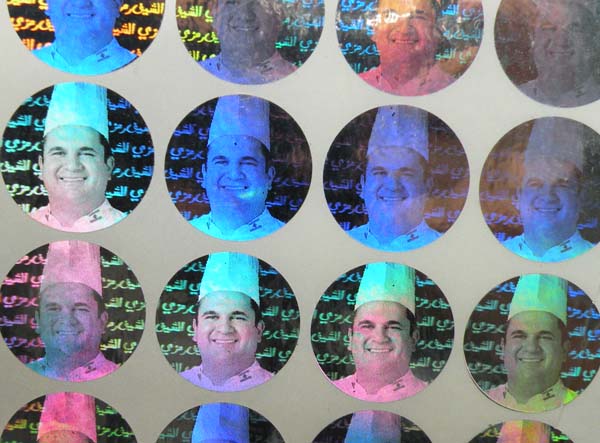
The hologram principle of it recorded hologram has the following characteristics:
(1) The three-dimensional resistance - because the hologram recorded in the phase information of the object light, the image having the characteristics of a significant parallax can see a realistic three-dimensional images.
(2) The hologram can not be torn up - because the hologram recording is the object light and the interference fringes of the reference light, and therefore have severable. After it was split any debris can reproduce the complete subject's image, but resolution is affected to some extent.
(3) A large capacity of information in hologram- the same a holographic photosensitive plate can be repeated exposure records, and without interfering with each other to reproduce the respective different images.
(4) the reproduction of the hologram can zoom in or out - because the diffraction angle and wavelength, using different wavelengths of laser hologram reproduction phase occurs zoom in or out.
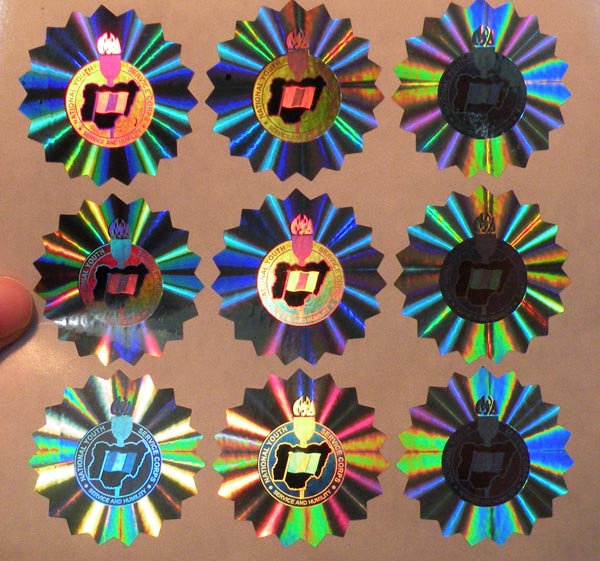
History of Hologram
Holography dates from 1947 , when British (native of Hungary) scientist Dennis Gabor developed the theory of holography while working to improve the resolution of an electron microscope.Gabor coined the term hologram from the Greek words holos, meaning "whole," and gramma, meaning "message". Further development in the field was stymied during the next decade because light sources available at the time were not truly "coherent" (monochromatic or one-color, from a single point, and of a single wavelength).
|
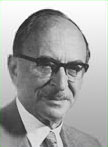
Dr. Dennis Gabor |
This barrier was overcome in 1960 by Russian scientists N. Bassov and A. Prokhorov and American scientist Charles Towns with the invention of the laser, whose pure, intense light was ideal for making holograms.
In that year the pulsed-ruby laser was developed by Dr. T.H. Maimam . This laser system (unlike the continuous wave laser normally used in holography) emits a very powerful burst of light that lasts only a few nanoseconds (a billionth of a second). It effectively freezes movement and makes it possible to produce holograms of high-speed events, such as a bullet in flight, and of living subjects. The first hologram of a person was made in 1967 , paving the way for a specialized application of holography: pulsed holographic portraiture. |
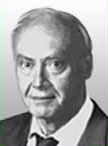 |
In 1962 Emmett Leith and Juris Upatnieks of the University of Michigan recognized from their work in side-reading radar that holography could be used as a 3-D visual medium. In 1962 they read Gabor's paper and "simply out of curiosity" decided to duplicate Gabor's technique using the laser and an "off-axis" technique borrowed from their work in the development of side-reading radar. The result was the first laser transmission hologram of 3-D objects (a toy train and bird). These transmission holograms produced images with clarity and realistic depth but required laser light to view the holographic image. |
 |
Their pioneering work led to standardization of the equipment used to make holograms. Today, thousands of laboratories and studios possess the necessary equipment: a continuous wave laser, optical devices (lens, mirrors and beam splitters) for directing laser light, a film holder and an isolation table on which exposures are made. Stability is absolutely essential because movement as small as a quarter wave- length of light during exposures of a few minutes or even seconds can completely spoil a hologram. The basic off-axis technique that Leith and Upatnieks developed is still the staple of holographic methodology.
Also in 1962 Dr. Yuri N. Denisyuk from Russia combined holography with 1908 Nobel Laureate Gabriel Lippmann's work in natural color photography. Denisyuk's approach produced a white-light reflection hologram which, for the first time, could be viewed in light from an ordinary incandescent light bulb. |
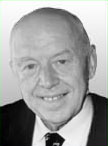 |
Another major advance in display holography occurred in 1968 when Dr. Stephen A. Benton invented white-light transmission holography while researching holographic television at Polaroid Research Laboratories. This type of hologram can be viewed in ordinary white light creating a "rainbow" image from the seven colors which make up white light. The depth and brilliance of the image and its rainbow spectrum soon attracted artists who adapted this technique to their work and brought holography further into public awareness.
Benton's invention is particularly significant because it made possible mass production of holograms using an embossing technique. These holograms are "printed" by stamping the interference pattern onto plastic. The resulting hologram can be duplicated millions of times for a few cents apiece. Consequently, embossed holograms are now being used by the publishing, advertising, and banking industries.
|
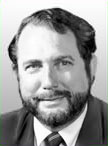 |
In 1972 Lloyd Cross developed the integral hologram by combining white-light transmission holography with conventional cinematography to produce moving 3-dimensional images. Sequential frames of 2-D motion-picture footage of a rotating subject are recorded on holographic film. When viewed, the composite images are synthesized by the human brain as a 3-D image.
In 70's Victor Komar and his colleagues at the All-Union Cinema and Photographic Research Institute (NIFKI) in Russia, developed a prototype for a projected holographic movie. Images were recorded with a pulsed holographic camera. The developed film was projected onto a holographic screen that focused the dimensional image out to several points in the audience.
Holographic artists have greatly increased their technical knowledge of the discipline and now contribute to the technology as well as the creative process. The art form has become international, with major exhibitions being held throughout the world. |
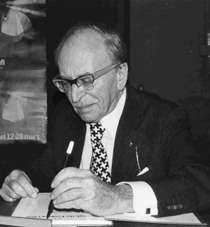 |
|
![]() English
English ![]() French
French ![]() German
German ![]() Spanish
Spanish ![]() Portuguese
Portuguese ![]() Italian
Italian ![]() Russian
Russian ![]() Romanian
Romanian ![]() Bulgarian
Bulgarian ![]() Hungarian
Hungarian ![]() Czech
Czech ![]() Danish
Danish ![]() Suomi
Suomi ![]() Turkish
Turkish![]() Swedish
Swedish![]() Norwegian
Norwegian![]() Slovenian
Slovenian ![]() Polish
Polish![]() Croatian
Croatian ![]() Slovak
Slovak ![]() Maltese
Maltese ![]() Lithuanian
Lithuanian![]() Latvian
Latvian![]() Slovak
Slovak ![]() Afrikaans
Afrikaans ![]() Arabic
Arabic ![]() Chinese(S)
Chinese(S) ![]() Chinese(T)
Chinese(T) ![]() Japanese
Japanese ![]() Korean
Korean ![]() Vietnamese
Vietnamese ![]() Thai
Thai ![]() Malay
Malay ![]() Indonesian
Indonesian







